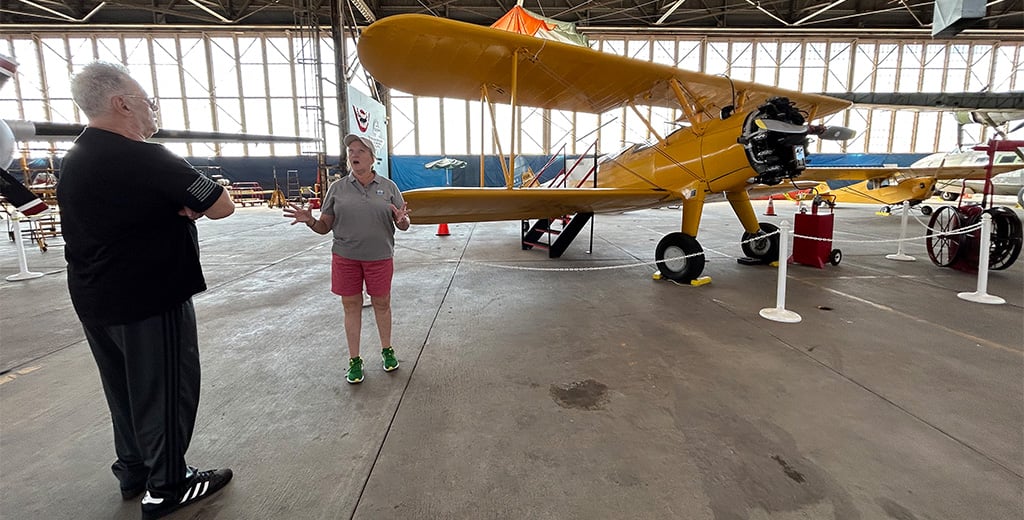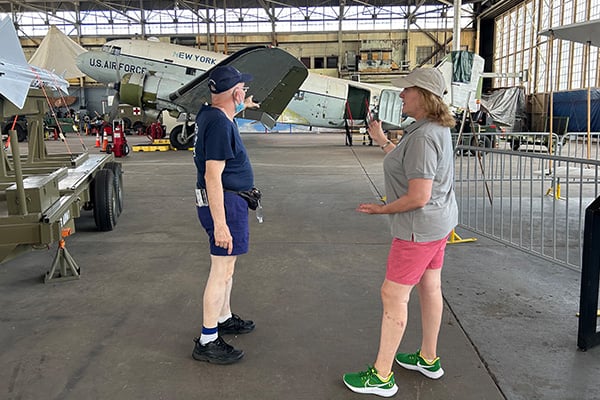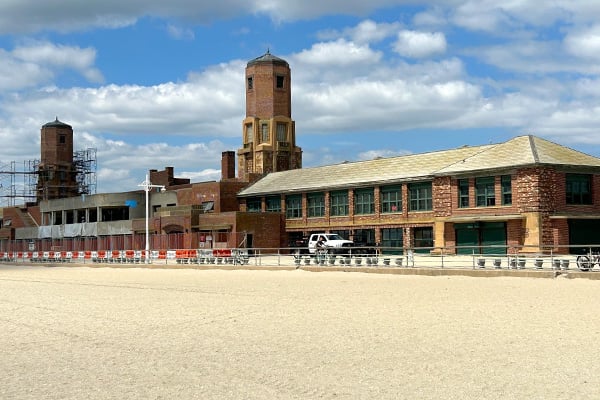October 6, 2023

Oh, the places teachers will go–as park rangers, that is.
Oh, the places you go as a teacher. This past summer, I was a teacher park ranger with the National Park Service at Gateway National Recreation Area in Brooklyn, New York. Yes, a uniform and hat were involved.
Since earning my master's degree, I’ve relished field trips and outdoor learning. When I moved to New York City in 2017 to broaden my experience as an educator, I began exploring the Frederick Law Olmsted classics: Central Park, Fort Tryon, and the paved greenway around Manhattan. Apartments here are tiny, so recreation tends to take place on the streets, and our green spaces are treasured in all five boroughs. My high school science classroom sits on the boundary of Gateway National Recreation Area looking out onto Jamaica Bay, an 18,000-acre wildlife refuge wedged between Brooklyn and Queens. Awareness of ecology is a part of life in our community that was hit by superstorm Sandy in 2012.
My entry into the Teacher Ranger Teacher program began during an eleventh-grade field trip last year to Floyd Bennett Field, New York City’s first municipal airport. Located within Gateway National Recreation Area, Historic airport Hangar B is a veritable twentieth- century aviation museum open to the public. Inside, volunteers from the Historic Aircraft Restoration Project (HARP) introduce the curious to aircraft such as the A-4B Skyhawk Navy bomber or the 1935 PBY Catalina patrol plane. Many volunteers are retired Navy pilots or mechanics who are happy to demonstrate the hands-on work that they do for a captive audience.
Apparently, I’d become a regular after bringing my tutoring clients and their families for a tour and volunteering during spring break. For free graduate credits at the University of Colorado-Boulder and a nominal stipend, I was asked to be one of twenty-three Teacher Park Rangers this past summer. Prior to teaching, I’d been a reporter for the Chicago Tribune and the Eugene Register-Guard. Exploring unfamiliar territory and asking questions is my natural state, so I couldn’t resist looking deeper into the partnership aspect of how the NPS is approaching stewardship and maintenance.
The Teacher-Ranger-Teacher program links National Park units with teachers from schools with underserved student populations in urban and rural school districts. It’s a shared effort between the government, its citizens, and universities nationwide that provides gems like Haleakalā National Park in Hawaii, Petroglyph National Monument in New Mexico, and the Brown v. Board of Education National Historic Site in Topeka, Kansas with lesson plans and activities that are free and meaningful. Teachers choose a particular project, spend significant time engaging in place-based learning, and go on to teach their students about the resources that the Parks provide and the interconnectedness of people and the environment.

My supervising ranger told me, “The NPS owns the land but can only add or build upon existing ‘footprints’ of structures.” For a nominal lease, private entities can agree to make improvements along park guidelines. As a local resident, taxpayer, teacher, and summer park ranger, I chewed on that during the six weeks that I field-tested my project on site, witnessing both the joys and challenges of public programming and policy.
While conducting tours, I realized just how much the public truly loves their national parks—it's not just a slogan. I was struck by how every visitor and group, almost on cue, raised their hands wanting to learn more about the work that the NPS is doing. Standing beside the mural of Women Airforce Service Pilots (WASP), they wanted to know: “did those ladies really fly planes?” (Yes. They were civilian pilots who flew planes from factories and locations such as Floyd Bennett Airfield to strategic port cities around the world.) Heads tilted sideways at The Wright Brothers exhibit as visitors observed Orville lying flat between the wings of the first plane, steering it with his whole body. Collective gasps could be heard as the group walked inside the Douglas C-47 Skytrain used for personnel transport during World War II. The experiences of the public were always so visceral.
At the same time, understaffing was a major issue. During the hottest July day on record, with sweat dripping under my cap, I watched a park ranger interpreter drive ten kayaks to a ramp for a class, then sprint to historic LGBTQ+ Riis Park to oversee thousands of beachgoers because no one else could fill in for him.

What I learned is that struggles like these would not be possible to navigate without the help of partnerships like the one between the NPS, a New York for-profit real estate LLC, and the federal government, which is currently realizing a multimillion-dollar restoration of a historic art deco bathhouse in Riis Park.
My hope for my students, who will be the final audience for my research, is that they’ll realize that with guidelines, partnerships can provide temporary solutions for humanitarian crises until short and long-term policies are developed. And together, we can make our national parks an enduring respite for recreation and sanctuary in a hectic world.
—By Jane Lake, MS '11 (special education)

